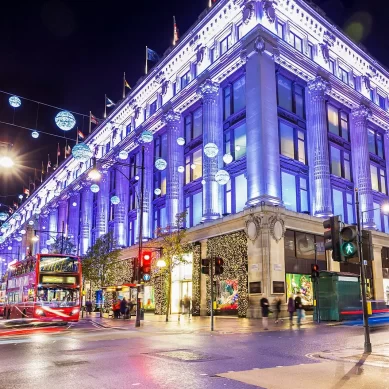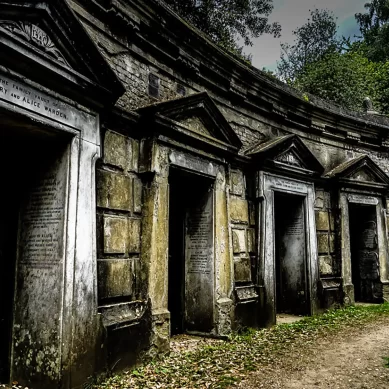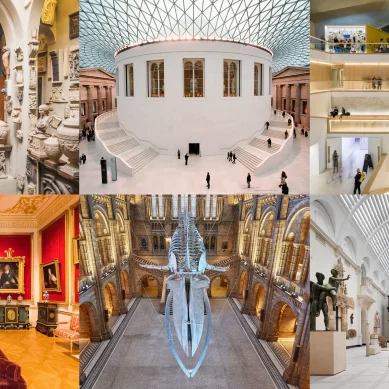
As the ancient city of Ayodhya witnesses the enormous construction of the Ayodhya Ram Mandir, a symbol of reverence for millions, there are fascinating aspects of this monumental undertaking that are frequently obscured by its sheer size. In this exploration, we will unravel a tapestry of fascinating and lesser-known facts about the Ram Mandir, providing an intricate glimpse into the spiritual, historical, and architectural components that make this temple a symbol of devotion and heritage.
- Historical significance
Ayodhya, located in the northern state of Uttar Pradesh, is historically significant as the birthplace of Lord Rama, a revered figure in Hinduism. The city’s history dates back to ancient times, which contributes to its prominence as a hallowed pilgrimage destination, also known as the “City of Temples”
- Divine Birthplace
The Ram Mandir is precisely planned and built on the same place in Ayodhya where Hindu mythology believes that Lord Rama, the seventh avatar of Lord Vishnu, was born. This idea has been deeply engrained in the region’s cultural fiber for decades.
- Ramayana Connection
The epic Ramayana, credited to sage Valmiki, is fundamental to Hindu mythology. Ayodhya serves as the primary backdrop for this epic, which narrates Lord Rama’s life journey. The Ramayana highlights not just Lord Rama’s supernatural nature, but also his dedication to dharma (righteousness) and unwavering heroism.
- Unresolved Mythological Temple Survey
Remarkably, archaeological examinations indicate that the Babri Mosque was constructed on top of an earlier building. Some assessments suggest that this construction is from the time of Lord Rama, however Indian historian Sarvepalli Gopal asserts that Ayodhya’s human civilization is no older than 2800 years. The intersection of myth and archaeology adds levels of intrigue to the historical narrative of the location.
- Construction Progress of Ram Darbaar
Dedication is demonstrated by the Ram Mandir’s ongoing construction. It signifies a modern manifestation of devotion and camaraderie among Lord Rama’s believers.
Ayodhya Ram Mandir’s architectural story takes place over three stories and a spacious 2.7 acres. The first level presents a detailed account of Lord Ram’s life, including his early years. Ascending to the first floor, guests will see the magnificence of Lord Ram’s Darbaar, a striking architectural work of art made from pink sandstone from Rajasthan’s Bharatpur.
 Christine Beasley
Christine Beasley
- Figures Revealed
When it comes to the Ram Mandir’s measurements, its length is 360 feet and its width is 235 feet. With the summit included, the height is 161 feet total. With its twelve gates and three levels, the temple of Ayodhya is a stunning example of extravagant construction.
- Sacred Basis
Because every element unites separate regions in a tapestry of shared faith, the inclusion of holy soil from 2587 regions represents a spiritual unity. This foundation highlights the temple’s greater significance for cultural unity.
- Soil from Thailand
The use of Thailand soil in the consecration ceremony represents the acknowledgement of Lord Rama’s legacy on a global scale. It is cross-cultural, which contributes to Ayodhya’s international appeal as a spiritual hub.
- Holy River Waters’s contribution
The presence of holy water from 150 rivers in India enhanced the consecration ritual on August 5. This holy mixture, made from many rivers and places, represents a spiritual coming together to create a special mixture that reflects the diversity of India’s holy waters.
- Unique Construction Materials
In addition to evoking traditional construction methods, the choice to eliminate iron and steel from the construction process and substitute elements like copper, white cement, and wood also promotes sustainability.
- Sacred Bricks
Incorporating “Ram Shilas,” bricks inscribed with “Shri Ram,” adds a dimension of sacredness to the construction. These bricks, some aged for over three decades, have historical significance and connect the present edifice to the past.
- Architectural Marvel
Designed by the Sompura family, renowned temple architects, the Ayodhya Ram Mandir is poised to be a visual marvel of artistic vision and traditional architectural prowess. Their connection to well-known temples, such as Somnath, gives the current project a historical and artistic depth.
- Architectural Specifics
The 360 pillars and Nagar architectural style highlight a dedication to classical beauty and architectural grace.
 Shiv Bhakt
Shiv Bhakt
- Combining Shastras with Chaulukya Style
The temple’s architectural plan, which follows Vastu and Shilpa Shastras, demonstrates a careful approach. The Gujara-Chaulukya style is included with deliberate intention to combine traditional knowledge with elegant design.
- Specialised Carvings
The temple is adorned with beautiful carvings that depict scenes from the Ramayana and highlight Lord Ram’s life. These details, which have been painstakingly created by skilled artisans, give the architectural wonder a creative and narrative quality.
- Centre for Culture and Education
Apart from its religious importance, the Ram Mandir is intended to serve as a hub for culture and education. A museum displaying items associated with Lord Ram and the Ramayana is one of the plans, along with educational initiatives aimed at fostering awareness of Indian cultural history.
- Financial Contributions and High-Level Assistance
Many different sources of funding have contributed significantly to the Ayodhya Ram Mandir construction. Notable figures, including Chief Minister Adityanath Yogi, Deputy CM Keshav Prasad Maurya Bapu, and spiritual leader Morari Bapu, have contributed large amounts towards the realisation of this gigantic undertaking.
- Future Perspective
In addition to reflecting progress, the goal of 90% completion by the opening in January 2024 paves the way for the larger project to renovate Ayodhya. By transforming the Ayodhya into a centre of culture and spirituality, the development projects want to increase the temple’s influence beyond of its hallowed walls.
- A Time Capsule for Posterity
An indication of the Ayodhya temple’s forward-thinking nature is the time capsule buried beneath it. It shows a dedication to safeguarding the temple’s historical and cultural relevance for upcoming generations and ensuring that its identity endures.
- Report on Progress
With construction already at 60% finished, January 2024 is a crucial milestone when it opens. The dedication to keeping devotees informed and involved in the temple’s growth is seen.
In summary, the Ayodhya Ram Mandir is more than just a construction project; it is a dynamic representation of the fusion of history, religion, and architectural genius. The temple invites believers and enthusiasts to study its complex story as construction moves forward, as each brick and inscription reveals a story of Lord Rama rich in spiritual legacy and cultural significance.
By: Thushitha M



































